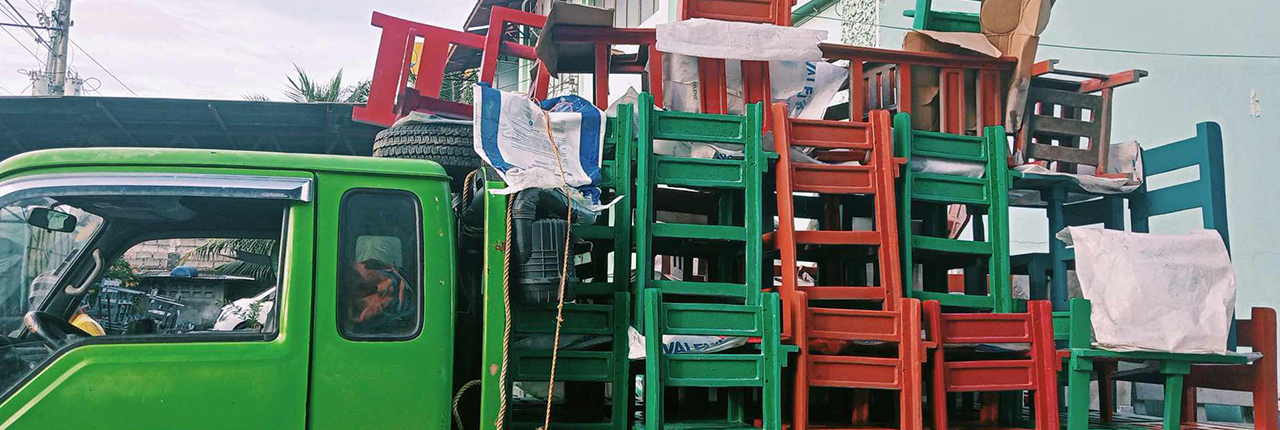40 school chairs in December 2023 for the Dona Rosa School in Mati, Davao Oriental.
30 school chairs delivered in January 2024 for the Jose C. Martinez Elementary School, Mati, Davao Oriental.
15,000 mangroves were planted under an old standing trees. Here, the fresh seedlings are safe and can grow up stress-free. San Isidro, Davao Oriental, is now fully planted. Now nature can take over.
Mangrove Planting Activities
Our mangrove activities are growing. As part of the Malizia Mangrove Park, we have set up four small tree nurseries in addition to the two existing ones at Puhada Bay. Tens of thousands more mangroves will be planted here this year, taking the Malizioa Mangrove Park well over the one million mark. We are also tackling a Herculean task and reforesting the open areas in the Guang Guang Nature Reserve with five species. The 88,000 seedlings planned for this are already growing in the tree nursery. What is so special about this project? Over the decades without mangroves, i.e. without shade, the ground has been covered with a layer of limestone, which has to be broken up in order to plant the new seedlings in the seabed. The explanation as to why a layer of calcareous soil has formed is simple: the surface water of the oceans has a high content of carbonate ions. When the water level is low, the sun heats the seawater slightly above 60 degrees Celsius and the lime begins to “fall” out of the water and build up as a layer on the bottom. Comparable to a lime deposit in a kettle. The lime is useful for marine animals and corals, but as a ground cover it prevents mangrove seeds from taking root. Here is a very short video about the arduous work of the planters:
Further 240,000 or so mangroves “fit” in our new planting area. The first seedlings are already being reared. The project with the Ecological Conservation and Humanitarian Organization is also designed as a training project to show young people how important mangroves are and how they can be successfully reintroduced into the wild. Here we use the discarded plastic drinking cups that accumulate en masse at the “Night Market” in Davao. They can be used several times. We finance the mangroves and our partner provides the training. A short video: www.facebook.com
Our new reforestation area is located in Digos, about an hour’s drive from Davao.
Discarded drinking cups are the containers for growing the plants as part of the school and planting program.






